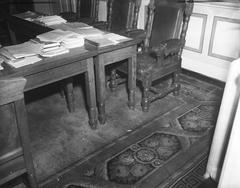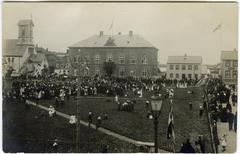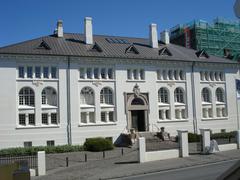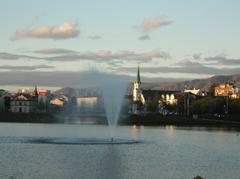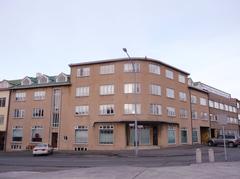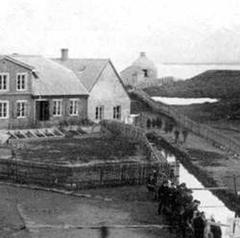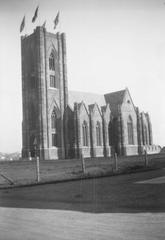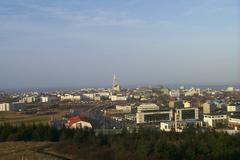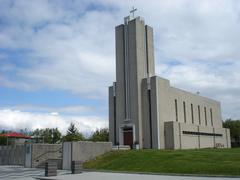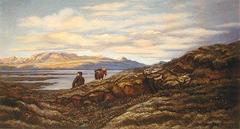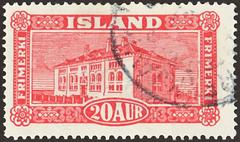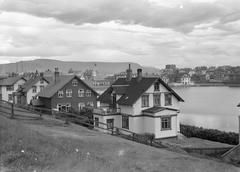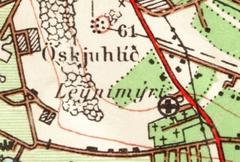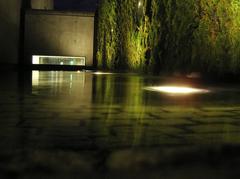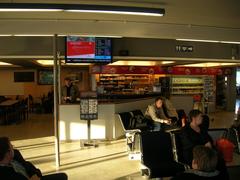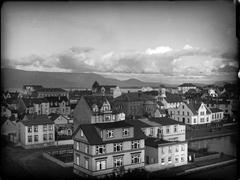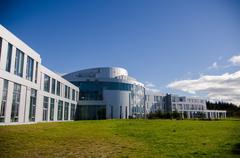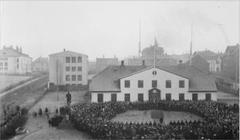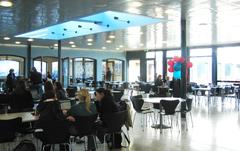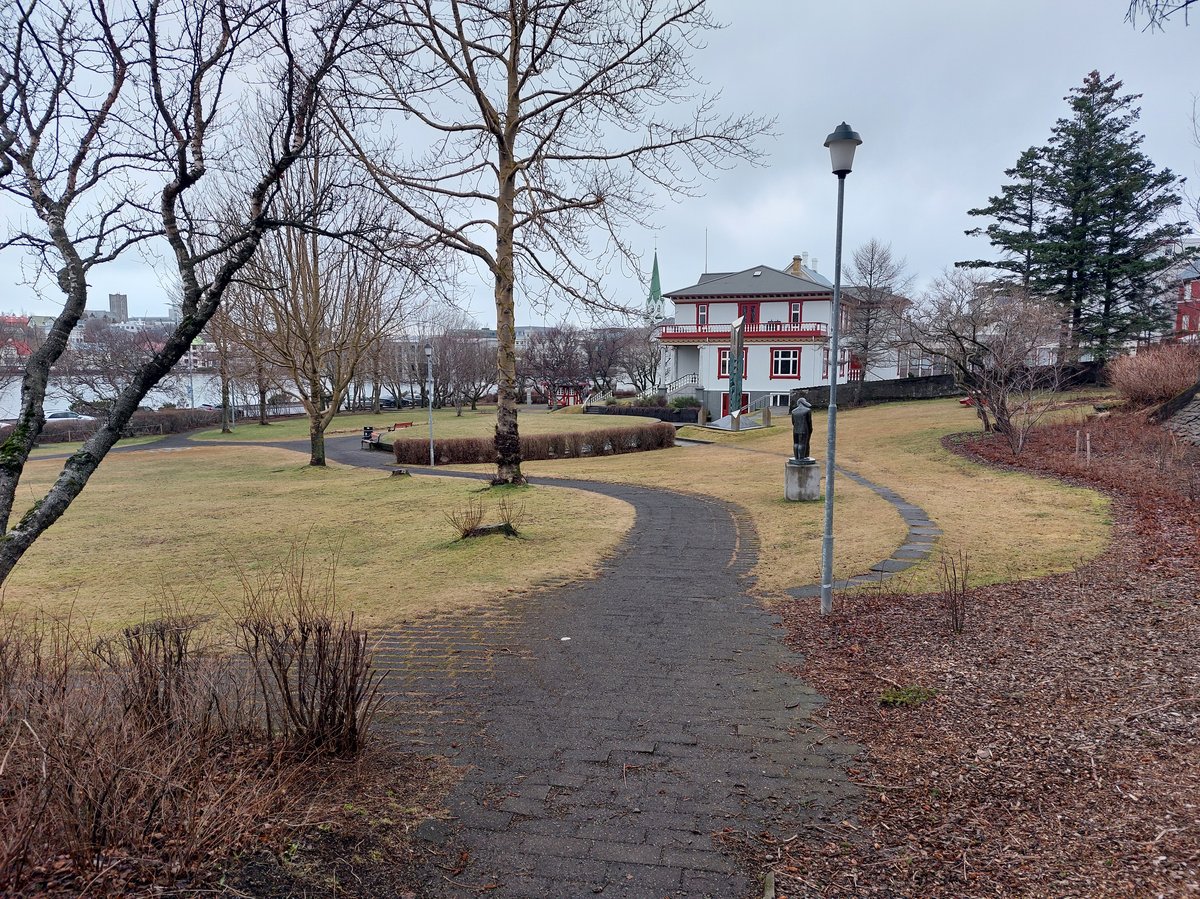
Fríkirkjuvegur 11, Reykjavík: Complete Visiting Hours, Tickets, and Historical Sites Guide
Date: 04/07/2025
Introduction
Fríkirkjuvegur 11 stands as one of Reykjavík’s most distinguished historical addresses—a living testament to Iceland’s architectural innovation and social transformation in the early 20th century. Overlooking Tjörnin pond and adjacent to Hallargarðurinn park, this neoclassical timber house, built for entrepreneur Thor Jensen in 1907, encapsulates a pivotal era in Reykjavík’s evolution from a modest trading post to a dynamic capital. Designed by self-taught architect Einar Erlendsson, the house is notable for its elegant European influences, refined Icelandic craftsmanship, and pioneering adoption of modern conveniences such as running water and electricity.
While the house itself remains a private residence, its exterior and the surrounding park are accessible and offer a rich visitor experience. This guide provides a comprehensive overview of Fríkirkjuvegur 11’s history, architectural features, cultural significance, practical travel information, and nearby attractions. Whether you are a history enthusiast, architecture lover, or casual traveler, the area around Fríkirkjuvegur 11 is an essential part of Reykjavík’s cultural landscape. For further details and updates, consult the Icelandic Heritage Authority (Minjastofnun) and Reykjavík city’s official portal (Reykjavik.is).
Contents
- Origins and Construction of Fríkirkjuvegur 11
- Architectural Style and Innovations
- Historical Significance and Preservation
- Visitor Information
- Visiting Hours and Admission
- Accessibility
- Location and Directions
- Travel Tips
- Hallargarðurinn Park and Cultural Context
- Public Artworks and Landscape Architecture
- Nearby Cultural Institutions
- Special Events and Guided Tours
- Practical Visitor Tips
- Frequently Asked Questions (FAQ)
- Conclusion
- Official and Further Resources
Origins and Construction of Fríkirkjuvegur 11
Completed in 1907, Fríkirkjuvegur 11 was commissioned by Thor Jensen, an influential figure in Iceland’s economic development. Architect Einar Erlendsson’s design introduced neoclassical symmetry and ornamentation to Reykjavík, a city then dominated by simpler, vernacular wooden structures. Materials for the house—including high-quality Swedish timber—were imported, reflecting both the owner’s ambition and Iceland’s growing international links at the dawn of the 20th century. This residence quickly became an icon of modernity and sophistication in a rapidly changing city (Minjastofnun).
Architectural Style and Innovations
Fríkirkjuvegur 11 is celebrated as a rare Icelandic example of neoclassical timber architecture. Its symmetrical façade, ornate cornices, and well-proportioned windows distinguish it from its contemporaries. The building was among Reykjavík’s first homes to feature running water, electricity, and parquet flooring—remarkable technological achievements for its time (Wikipedia). The interior woodwork and painted finishes were created by some of Iceland’s earliest professional artisans, further enhancing its status as a showcase of craftsmanship.
Historical Significance and Preservation
Beyond its architectural merit, Fríkirkjuvegur 11 symbolizes the rise of Reykjavík’s new elite and the city’s modernization. The house also became known as “Bindindishöllin” (the Temperance Hall) due to its associations with temperance societies and social gatherings. In recognition of its exceptional heritage value, the building was officially protected in 1978, ensuring that its historic features would be preserved for future generations (Minjastofnun).
Visitor Information
Visiting Hours and Admission
- Fríkirkjuvegur 11 (House): Privately owned; not open to the public for interior visits.
- Hallargarðurinn Park: Open year-round, 24 hours a day; free admission.
While you cannot tour the house itself, the park surrounding it offers excellent views and interpretive signage explaining the site’s significance.
Accessibility
- Hallargarðurinn Park: Wheelchair and stroller accessible via paved paths; benches and picnic tables available.
- Restrooms: Public restrooms are located nearby at the National Gallery of Iceland and Reykjavík City Hall.
Location and Directions
- Address: Fríkirkjuvegur 11, Reykjavík, Iceland
- Getting There: Easily reached on foot from central Reykjavík; several city bus routes stop nearby (Strætó). Limited street parking; walking or public transportation is recommended.
Travel Tips
- Visit during daylight hours for the best photographic opportunities and to enjoy the sculptures and landscaping.
- Combine your visit with nearby attractions such as the National Gallery of Iceland, Reykjavík Women’s School, and Tjörnin pond.
- Dress in layers—Reykjavík’s weather can be unpredictable.
Hallargarðurinn Park and Cultural Context
Hallargarðurinn (“The Palace Garden”) is a tranquil green space on the eastern shore of Tjörnin, adjacent to Fríkirkjuvegur 11. The park was established in 1954 and redesigned in 1986, creating a harmonious setting for public art and community events. Its proximity to significant institutions like the National Gallery and Reykjavík Women’s School enhances its cultural relevance (Reykjavik.is).
Public Artworks and Landscape Architecture
The park is home to notable sculptures, including:
- Adonis by Bertel Thorvaldsen: A reproduction of a neoclassical statue by the Danish-Icelandic sculptor, situated at the park’s corner.
- Piltur og stúlka (Boy and Girl) by Ásmundur Sveinsson: A modernist work by one of Iceland’s most celebrated artists.
- Memorial to Thor and Þorbjörg Jensen by Helga Gíslason: Honoring the house’s original owners.
Flower beds, mature trees, and walking paths complement the artworks and offer panoramic views over Tjörnin to the Reykjavík skyline (HMDB).
Nearby Cultural Institutions
Fríkirkjuvegur 11 sits within a vibrant cultural corridor. Nearby attractions include:
- National Gallery of Iceland
- Reykjavík Women’s School (Kvennaskólinn í Reykjavík)
- Hljómskálagarðurinn Park
- Downtown Reykjavík shops and cafés
These destinations are within easy walking distance, making the area ideal for a half-day cultural exploration.
Special Events and Guided Tours
Hallargarðurinn park often hosts open-air concerts, art fairs, and cultural festivals such as Menningarnótt (Culture Night) and the Reykjavík Arts Festival (visitreykjavik.is). While there are currently no official guided tours inside Fríkirkjuvegur 11, local walking tours may include the park and the house’s exterior. Check with tour operators or the Visit Reykjavík portal for current schedules.
Practical Visitor Tips
- Photography: The house, park, and Tjörnin are highly photogenic—ideal for cityscape and architectural photography.
- Dining: Nearby cafés and restaurants offer Icelandic specialties within a short walk.
- Weather: Summer brings extended daylight and vibrant flowers; winter offers peaceful snowy landscapes.
- Wi-Fi and Currency: Free Wi-Fi is widely available; Icelandic króna (ISK) is accepted everywhere; credit cards are standard.
Frequently Asked Questions (FAQ)
Is Fríkirkjuvegur 11 open to the public?
No, it is a private residence; however, the exterior can be viewed from Hallargarðurinn park.
Are there tickets or admission fees?
No tickets are required for the park or to view the house from outside.
Is the area accessible for wheelchairs and strollers?
Yes, Hallargarðurinn has paved paths suitable for all visitors.
What attractions are nearby?
The National Gallery of Iceland, Tjörnin pond, Hljómskálagarðurinn park, and downtown Reykjavík are all close by.
Are events held in Hallargarðurinn park?
Yes, especially during summer and cultural festivals.
Conclusion
Fríkirkjuvegur 11 embodies a significant chapter in Reykjavík’s architectural and social evolution. While the house itself is not open to the public, its presence—set within the artistically rich and accessible Hallargarðurinn park—provides visitors with a tangible connection to Iceland’s heritage. The park’s public art, scenic views, and proximity to cultural institutions make this area a must-visit for those seeking both relaxation and enrichment in the heart of Reykjavík. Enhance your visit with up-to-date information from official sources and consider downloading the Audiala app for guided tours and cultural updates.
Official and Further Resources
- Minjastofnun - Icelandic Heritage Authority
- Reykjavík.is - Hallargarðurinn
- Your Friend in Reykjavík - Architect Einar Erlendsson
- Visitreykjavik.is - Events & Visitor Info
- National Gallery of Iceland
- Public Transport - Strætó
For additional insights and up-to-date event listings, consider the following resources:
- Guide to Iceland
- Top 10 Reykjavík Landmarks
- Reykjavík Summer Festivals Guide
- Cultural Events in Reykjavík


